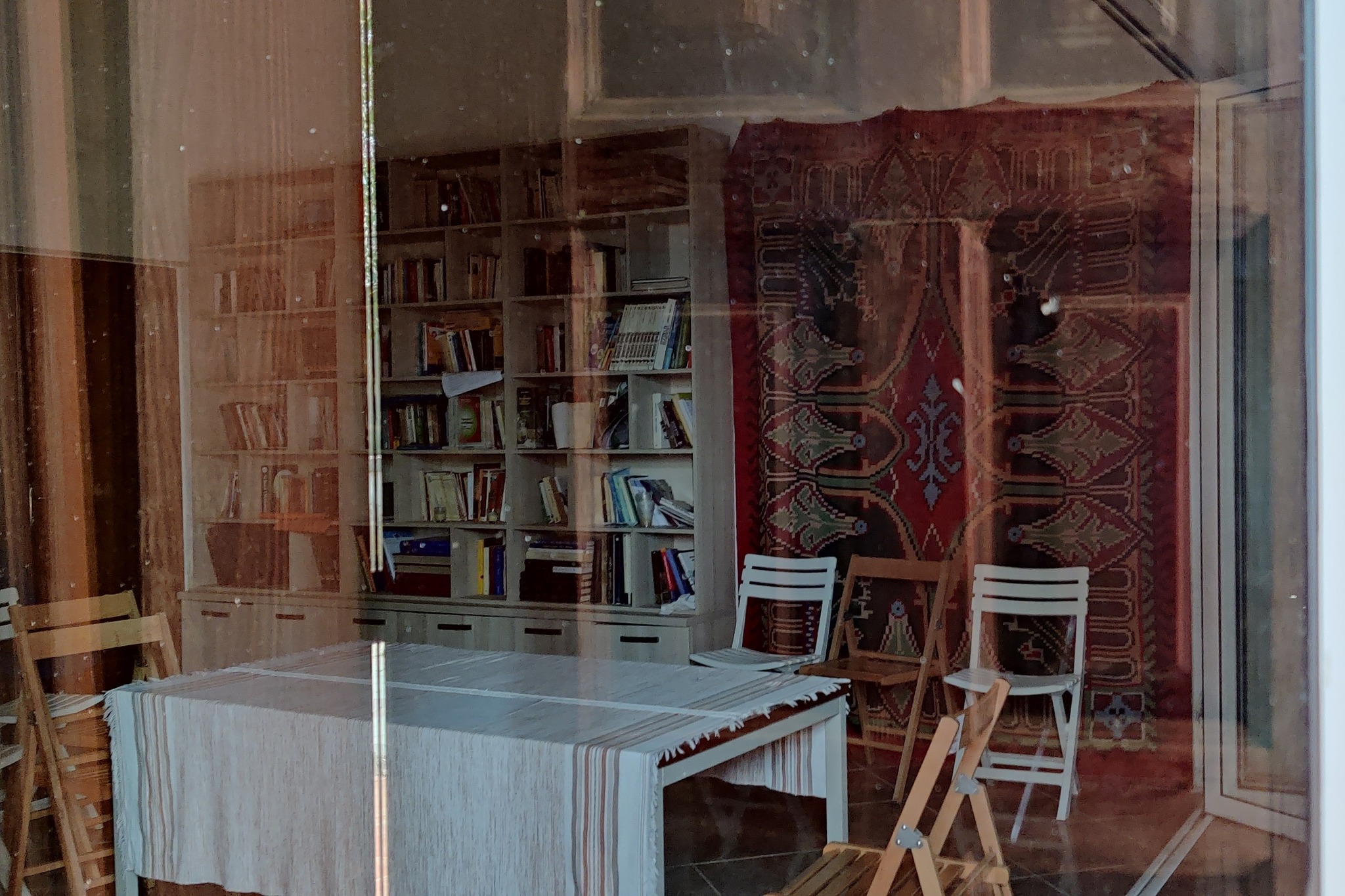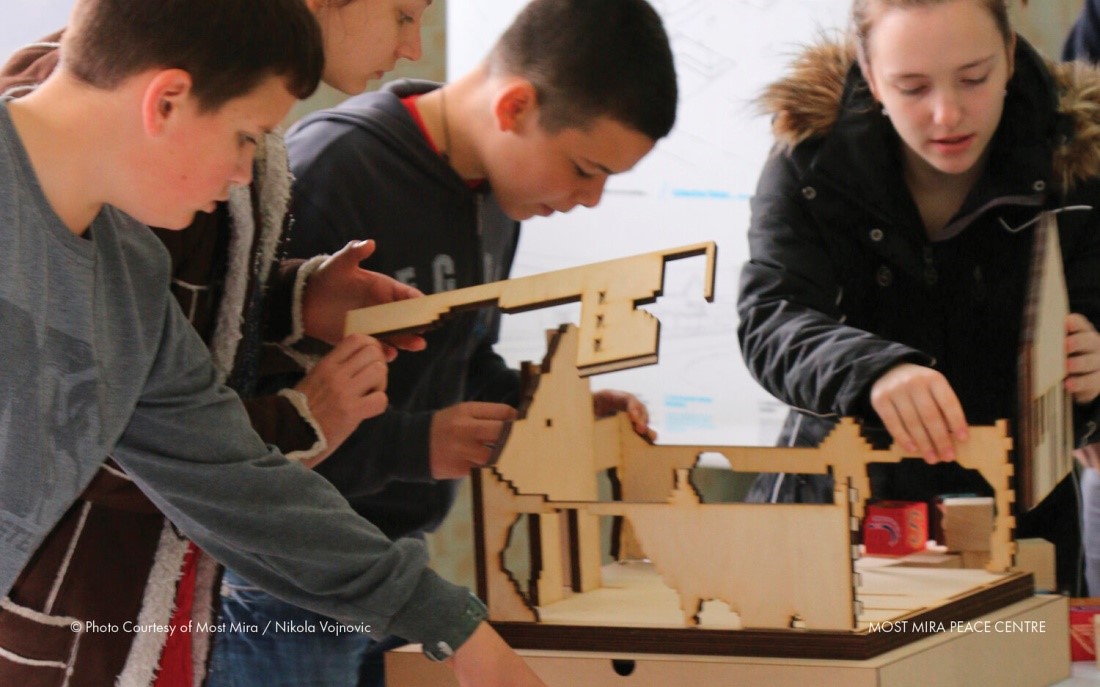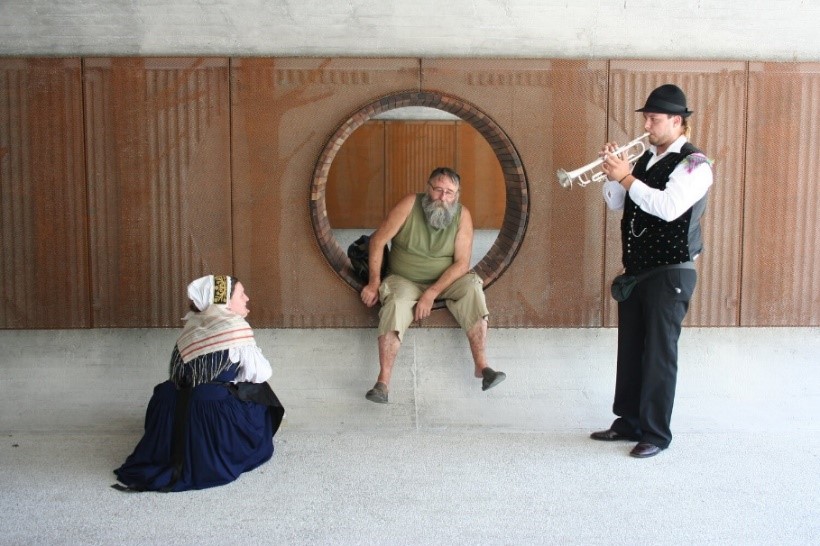After fulfilling the vital conditions such as housing and food for the workers, the Albanian industrial cities were enriched with “houses of culture”, complex buildings which had stages and halls for concerts, meetings and cinemas, utilitarian spaces, as well as libraries, art galleries etc. Such is the Cultural centre of Vau Dejes, built during the years 1968-1970.
From 1974 to 1991 the Centre was administered by the United Agricultural Cooperative Mjedë[1], which included the town of Vau Dejes, then known as Laç of Vau Dejes. This is the golden age of this Cultural Centre, because at this time a series of cultural activities took place periodically, festivals, theatrical and film performances, festive and memorial meetings, and even concerts with classical music.
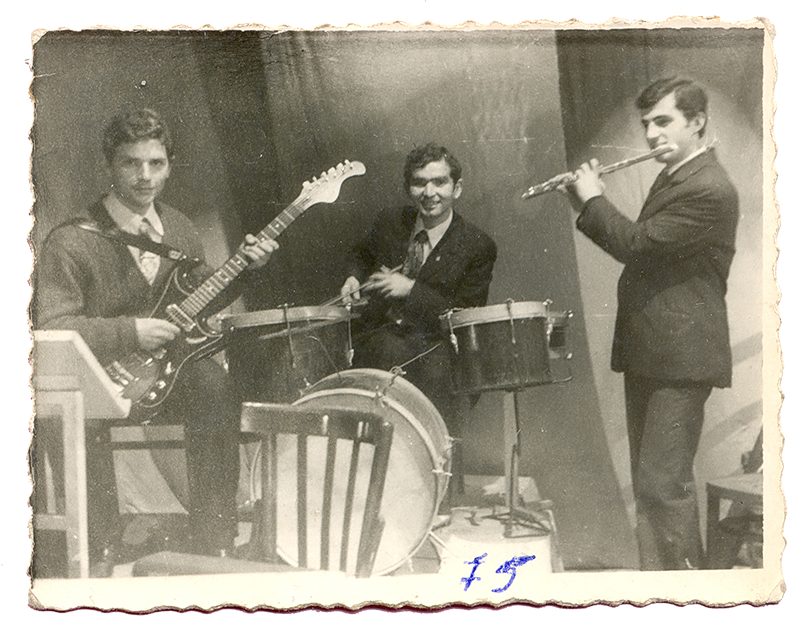
At that time the Centre was managed by a staff of 5 employees, in the late 1990s, while in 2017, the number of employees was 9 .
The first reconstruction of the Centre building was done in the mid-1990s by the then Municipality of Vau Dejes, but 2 years later until 2002, the Centre was not functional, also due to lack of staff.
The Vau Dejes Cultural Centre reopened in full operation on March 1, 2005, and in 2006 it was reconstructed, expanding the range of cultural activities which brought about a revival of social life in the city of Vau Dejes. Since the city and the area lacked a museum, in 2013, a very rich museum room was opened in the premises of this centre , while in 2014, the Centre was named “Gjin Shkoza” .
Ongoing, 2015 turns out to be the last year of activities at the Vau Dejes Cultural Centre. Thus, at the beginning of the year, a comedy was staged there , while a few months later the Vau Dejes Folklore Festival was organised .
In continuation, several other activities were organised, but in recent years, the Centre is mentioned mainly in function of political and administrative elections , as well as some public hearings of the Municipality of Vau Dejes . The reason for this is the degradation of the roof of the building from 2016 onwards, and consequently – of most of the interior of the Centre, including the stage and the large concert hall, props, wardrobe, etc. In the General Local Plan (PPV) of the Municipality of Vau Dejës, approved in 2017, the cultural centre is mentioned only once (p. 110) in the general context.
The previous local administration, but also the current one, have constantly expressed their good will for the reconstruction and return to function of this Centre , but this has not been possible due to lack of funds. The degraded condition of the building has attracted the attention of local and national media , which has tried to sensitise various donors to intervene in the reconstruction of the Centre.
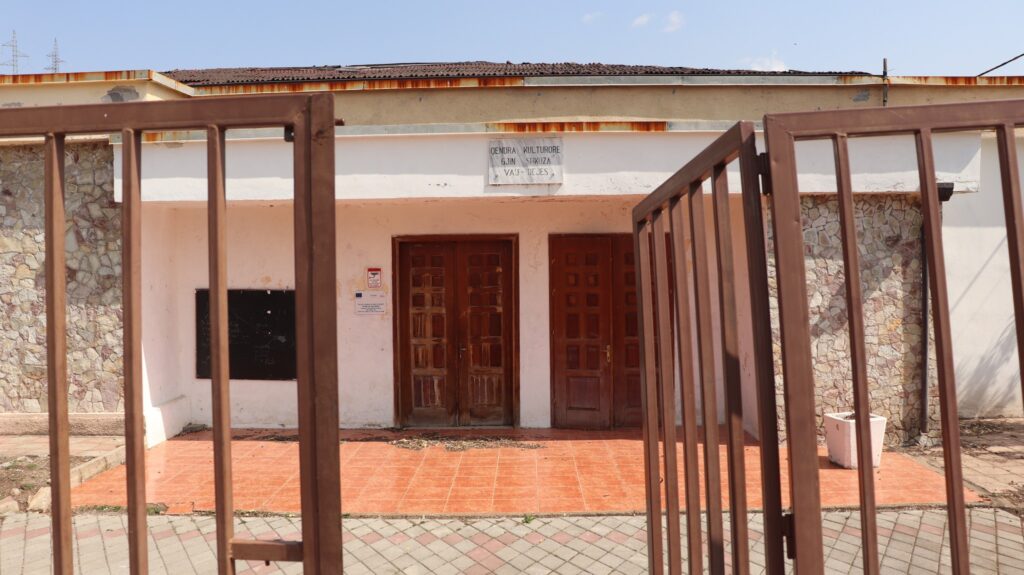
However, currently the degradation of the roof and most of the indoor facilities is as presented in this February 2022 news chronicle, where it is also stated by the head of design office of Vau Dejes Municipality that the architectural project is already finished and submitted to the Ministry to request for funding. This project involves interventions that improve exterior and interior walls, flooring, ceiling, roof, electrical work and finishing that will retrieve the functionality of the building. The cultural centre ensemble consists of two buildings (Figure 3), which are accessed directly from the main road, the main building of cinema and theatre (right; 611.4m2) and the secondary building for the other cultural venues such as library, dancing hall, music studio, workshop area and other utilitarian spaces (left; 325 m2). The yard in between the buildings offers quite a space for leisure and outdoor activities, and the close distance provides opportunities for communication.
Challenges and Opportunities
Cases of using vacant spaces and adaptive reuse of abandoned buildings as art and culture venues, such as labs, hubs, galleries, open spaces for discussions, exhibitions, performances etc, are more common in the capital of Albania, Tirana. Combining this with the location of universities, public and private, claiming better quality of education and wider employment opportunities, has attracted a large number of youth not only from villages around the country, but also from the cities. Therefore, one of the main challenges is motivating and encouraging youth to bring innovative ideas and build creative nodes in their hometowns. There is much to learn not only to learn from successful models in the country, but also in the region and beyond in order to comprehend the fields of creative industry, methods and approaches, concepts of shared spaces and recreational spatial elements which provide opportunities for different social groups. And more importantly, how much this affects the social life and the will to engage in city dynamics. Participatory strategies need to be used for needs assessment and implementing those models, which will transform this particular space and other vacant spaces into community-oriented city life.
There are vast opportunities to learn these concepts and approches, however management by institutional authorities and financial aspects remains a challenge. The former concerts the policies in governing vacants spaces in urban areas, therefore narrowing the collaboration of stakeholders to property owner and space user, which then relates to affordability to pay rent due to profit-oriented owners. Moreover, there is no relief in taxes concerning start-ups, early-stage enterprises and independent artists. As for the former, the financial aspect of the model, in this particular case, the Municipality being the owner of the cultural centre, which is not a business-oriented model of governing, has remained hostage to the lack of funding for the reconstruction, completely suspending the artistic and cultural life of this community.
On the other hand, there are several opportunities of funding for creative and entrepreneurial hubs in Albania, but there is a lot more work to be done in terms of expertise and gaining experience in terms of implementation and level of impact. This shortcoming also applies to the staff of local government, concerning expertise and willingness to compile management policies, of this Cultural Centre in particular, to attract interested parties, stakeholders and diversify the spatial potential of the building.
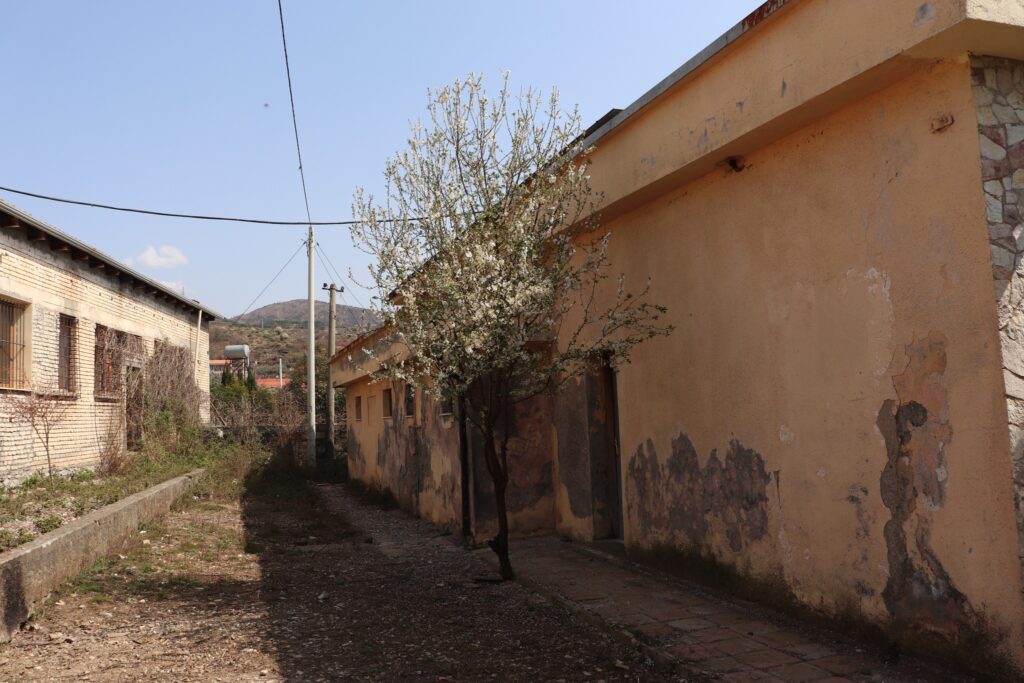
Lessons Learned
Rather than highlighting and promoting space reuse through adoption, this case calls for not letting go of using it for its original function and consistently keeping the space alive. For decades this building has provided the space for cultural practices and education. Although the cultural venues that were available also in most villages all around the country during the communist regime, after the change of government system had a different fate, local and regional cultural figures and other stakeholders in the area ensured the ongoing functionality of this centre. Regardless of the frequency of use and the diversity of art and culture activities, the centre remained a space for social engagement, which impacts the daily life of the community. Without it, it is not possible to sustain a good quality of life in our community, where depopulation is an ongoing issue and opportunities for recreation are shrinking. Through this case we see that the suspension of the building function for around 5 years depriving the community of cultural engagement, impoverishes their lives, which consequently increases dissatisfaction with the habitat where they live and changes environmental behaviour.
Therefore, “Gjin Shkoza” Cultural Centre has the potential of becoming a model of cultural activism if the local community and youth in particular are engaged in developing new methods of revitalization. Establishing cooperative relations with the Municipality owing to intertwined responsibilities, various stakeholders, such as young artists, entrepreneurs, NGOs may bring crucial vitality to the city and the surrounding areas through creative expression.
Extracted from the Research Report. Prepared by GO2 Albania.

